Tips & tricks to drive safer on the highway.
5 Tips to Drive Safe on the Highway
Closed Caption
Introduction
- Is this what you feel like when you drive on the highway? Are you terrified and have some trepidation around traveling at high speeds? Today we're going to give you five tips and strategies to be a safer, smarter driver on the highway.
Stick around, we'll be right back with that information.
Tip #1 - Space In Front
Space management, tip number one, manage space well.
Maintain your three second following distance.
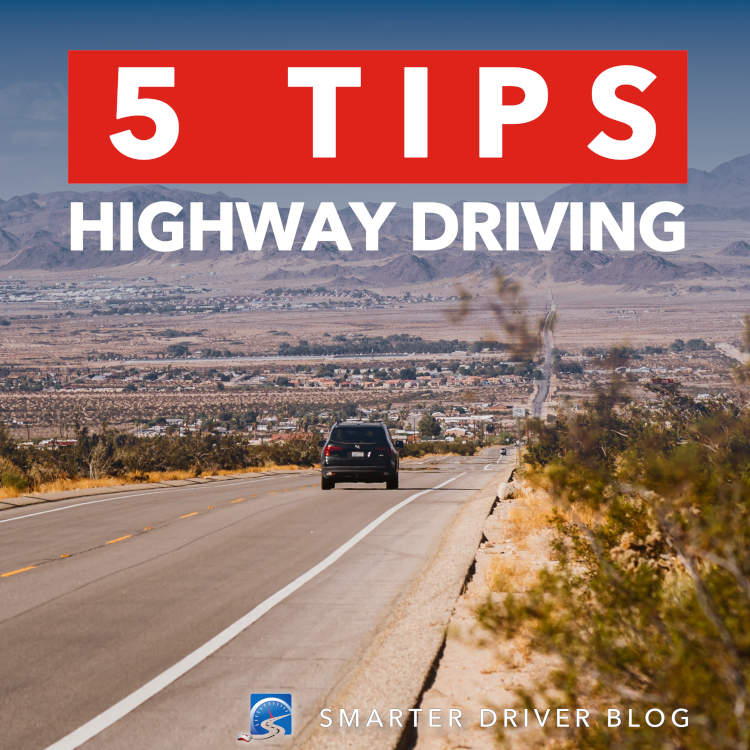
So we're following the big truck.
The big truck is going past the fixed sign on the side of the road.
One rhinoceros, two rhinoceros, three rhinoceros, so I'm about two and a half seconds behind the big truck in front of me.
You want two to three seconds minimum following distance.
Also know that big trucks, loaded big trucks like this one in front of me, this is a set of Super B's a weighs out at 140,000 pounds (63,500kg).
That big truck is going to slow down going up the hill.
So we're now doing 50 miles an hour, 80 kilometers an hour with the big truck in front of us.
I'm going to come out of fifth gear--out of passing gear--and I'm going to get into fourth gear, shoulder check, I got to throw on some defrost here.
And I got to vehicle coming up behind me really fast.
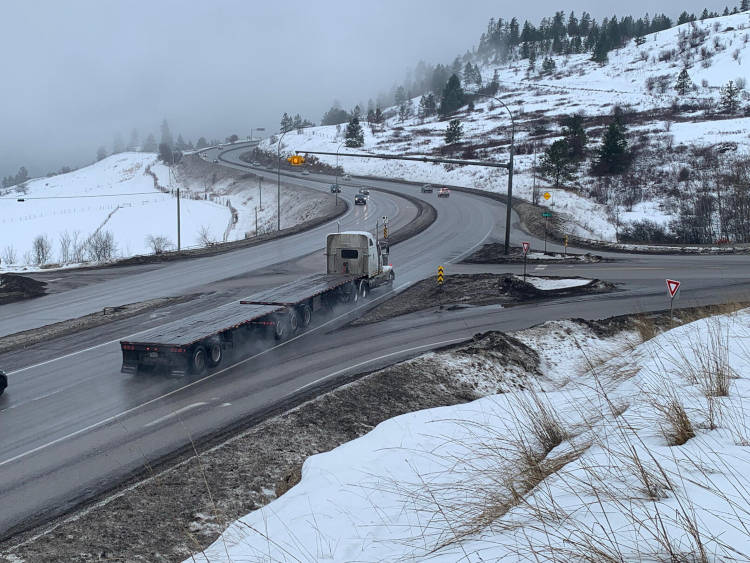
On highways in the winter, keep your wiper fluid full with winter washer fluid
Now, windshield wipers on full, going past the big truck because the big truck is kicking up a lot of wet and moisture from the road.
And going downhill, do not hang out here beside the semi-truck.
All right, the speed limit is 90 kilometers now and 55 miles an hour for those of us in the States.
Turn off our windshield wipers, put up that, shoulder checking and moving back over to the other lane.
If you're not near anything, it's less likely that you'll hit anything.
Now, space management, you don't want to be near other things, you don't want to hang out behind big trucks and whatnot when you're driving on the highway.
We can see it's clear now, vehicle going past us, out in their lane, and they're going on and nothing to worry about.
We have good space management.
I have another vehicle coming up here, I can see him in the mirror behind me.
Road spray coming off, got my windshield wipers back on.
So in the wintertime when you're driving such as this, make sure that you have the washer fluid full with winter washer fluid.
And have good windshield wipers on your vehicle as well.

Observe to the rear to know when other drivers are passing. Hold your course & speed.
What to do When Driver's Are Tailgating You
And also I can see that vehicle behind me is too close to me, they're probably one second off my bumper.
So I know that I cannot jam on the brakes with that vehicle behind me, otherwise I'll be rear-ended.
So I'm looking farther down the road, and I'm doubling the space in front of my vehicle, because that vehicle behind me was too close to me.
But now that vehicles backed off and regain their space, so now I'm safe again.
On the highways, you also want to drive between the clusters of vehicles.
For whatever reason, drivers feel that they need to drive in a cluster and they're easily recognized on the roadway.
It's just a group of vehicles driving together down the highway.
You want to drive in the spaces between the clusters, that is going to keep you a lot safer.
As well, you're going to be driving the speed limit for the most part, and you want to drive in the right hand lane.
Stay in the right lane and just let the other traffic flow around you.
You're going to be a lot safer.
Don't be out there in the hammer lane unless the traffic around you is driving really slow like in front of you and you need to get past those types of things.
But for the most part, if you're new, you're a beginner, you have some fear around driving out on the highway, then stay in the right hand lane, just put it on cruise control at the posted speed limit.
And then look farther down the road and just stay in this lane.
Stick around to the end, funny bits and more videos to make you a safer, smarter driver.
Tip #2 - Where Are You Looking; What Are You Seeing?
Tip number two, scanning.
Make sure that you're looking in your mirrors, you're checking the traffic behind you.
Have a 360° awareness around your vehicle.
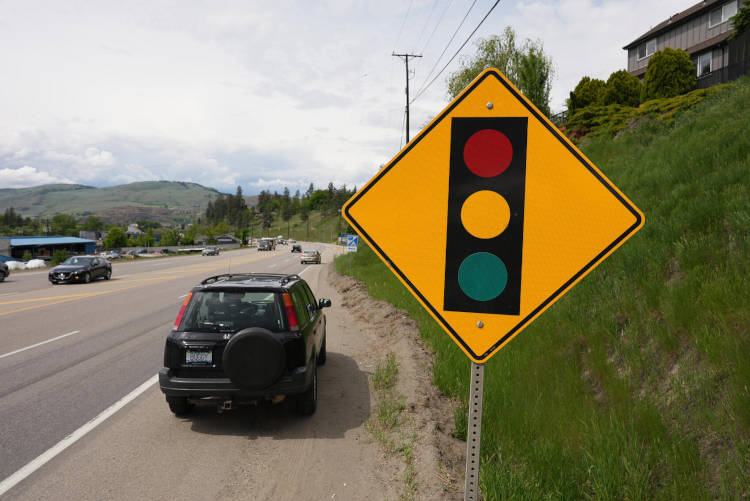
Cautionary sign warning of traffic lights ahead. Know that traffic may be slowing.
Where does the road go and what infrastructure (bridges, overpasses, curves, on- & off-ramps, etc.)
You're looking far down the road, you're figuring out where the road goes, I can see that it curves around to the right here.
I can see that I have dashed lines in this center of the roadway here so it's safe for me to pass.
Lane or road markings.
And lane markings are important when you're driving on the highway.
I have a fog line here on the right.
And I can see the vehicle in front of me is braking.
And again, I see a merge sign here.
So I'm looking for the traffic coming out onto the highway.
And if I see traffic coming out onto the highway, then what I'm going to do is I'm going to move over to the other lane.
Finding and locating intersecitons
So I'm looking at that interchange and I'm checking to see there aren't any vehicles there which there are.
Bridges and overpasses in the winter in a freeze first and I'll put a video up for you on 11 tips on driving in the wintertime and keeping yourself safe.
Glare from the Sun
Now I've got the sun behind me and it's reflecting off the two wing mirrors and it's getting you right in the eyes.
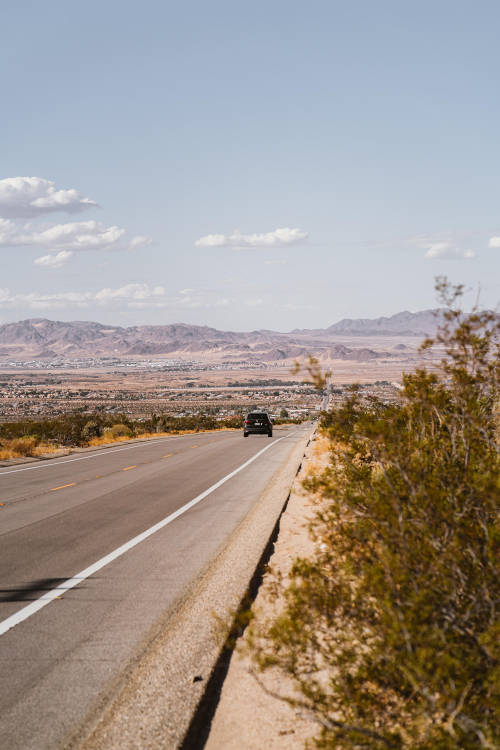
Have quality sunglasses in your vehicle to deal with bright sun and reduce fatigue.
Try to focus on looking forward, don't get obsessed with the light coming off the mirrors.
Now we're going to turn a little bit, it's going to diminish.
It's not going to be as bad but it is one of the hazards that you're going to have to deal with when you get out on the highway at times.
Glare will most likely occur near sunset and sunrise.
When the sun's just kind of on the rise and you're going to get that glaring sun.
And when you get that glaring sun, you're going to have to use the techniques for driving at night to locate the roadway and look for other traffic and keep yourself safe.
I'll put the car up in the corner for you on the night driving video.
Have a look for that.
To give your vehicle centered in the lane look farther down the road, because the vehicle is going to go where you're looking.
The vehicle will go where you're looking; look as far down the road as you can see.
So for example, this curve goes off to the right here and goes over there, so we're looking over there, and the traffic coming along the mountain there.
And that way the vehicle is going to stay centered in the lane.
So essentially what you got to do is you got to get your vision off the end of the hood of the vehicle and farther down the road as far as you can see.
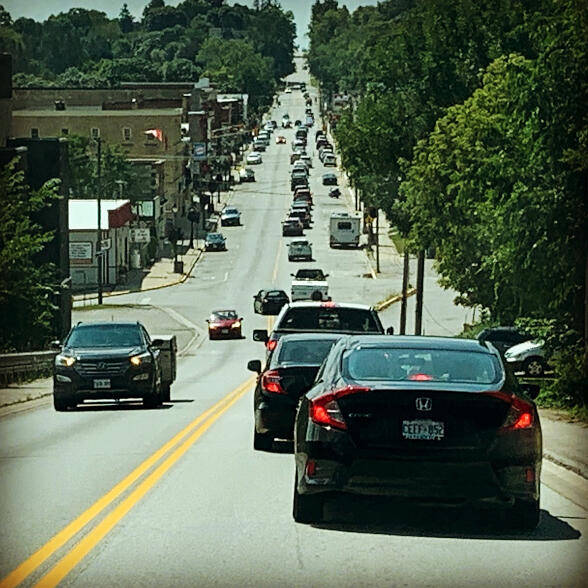
Traffic is slowing when vehicle get closer together.
Tip #3 - Are you Seeing the Traffic Signs?
Tip number three, traffic signs.
Look at your traffic signs while you're driving along the highway.
This is an object marker sign.
It tells you a fixed object that you could potentially strike when you're driving along the roadway, and it tells you on which side to pass.
And I'll put a video up in the corner for you how to look at the card on a full explanation of object marker signs.
Now we have another sign here saying that my lane is going to end in 200 meters, about 250 yards, signal on, mirror signal, shoulder check.
And we simply drift over as the lane ends into the other lane, keeping our signal on until we're completely in the other lane.
Visor back up, I'm not in the glare, and I'm regaining my space behind this vehicle in front.
Rumble Strips Save Lives
As well there's a rumble strip over there, and the rumble strip helps drivers at night who may fall asleep and drive onto the rumble strip.
And it causes the vehicle to vibrate here, I'll just drift over here and show you.
So that's what happens if you hit a rumble strip along the highway.

Quick check to see if you're centered in your lane: the fog line should be in the center of the hood.
These are for drivers driving at night and they may fall asleep in the wheel and could potentially wake them up and I could...
Difficult to document that but I know that it saved a lot of lives.
Destination sign, Kelowna, BC, Canada - 32 kilometers, I can tell how far I am from a city.
And I'm going to end up in an urban area here quickly.
Tip #4 - Where are the Intersections...Who's Coming At Me
Tip number four, locating intersections.
I have an intersection here, I can see by the object marker signs and other signs here, and I'm making sure there's no vehicles there.
Locate your intersections.
This road sign is telling me that there's another intersection up here.
It's an off ramp with an interchange but it's still an intersection where you could potentially collide with other vehicles.
Keep in mind that more than 40% of crashes occur at intersections.
So make sure that you're looking farther down the road, and you're using the traffic signs to locate the intersection.
Signs & Lights that Mark High Risk Intersections
And we have flashing lights up here indicating the intersection, we can also see that we have a road sign here indicating heavy trucks entering the highway.
So this is a high risk intersection.
So you want to be scanning vigilantly when you're going past this intersection to make sure nobody's pulling out.
And I live here, so I know that's the dump and the garbage trucks and whatnot are coming out of the garbage dump.
There we see the interchange here.
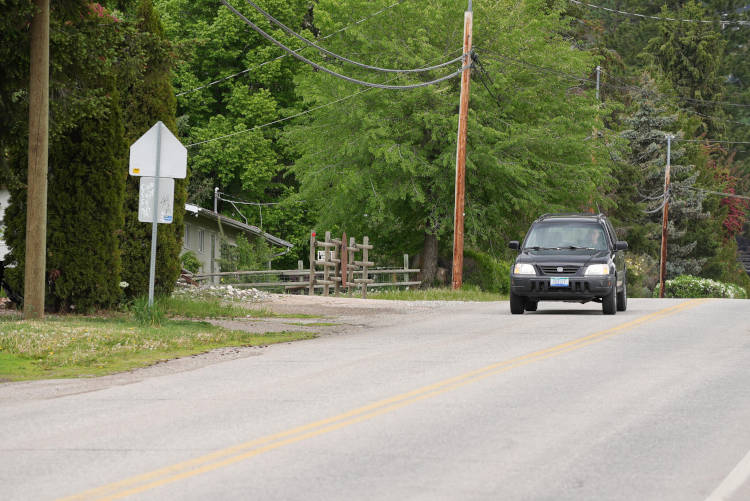
Pentagon shaped signs warn of pedestrians and schools in area.
We're watching making sure there aren't any vehicles getting off at the interchange.
And we're making sure we're looking down into that interchange to see if there's any vehicles coming up and out onto the roadway.
Because it goes to three lanes here, we want to stay in the center lane if there's a vehicle coming out onto the roadway, but there aren't vehicles coming out on the roadway, so we're going to move back over so the right here.
Tip #5 - Learn to Use Cruise Control on the Highway
Tip number five, cruise control.
Use your cruise control to manage your speed.
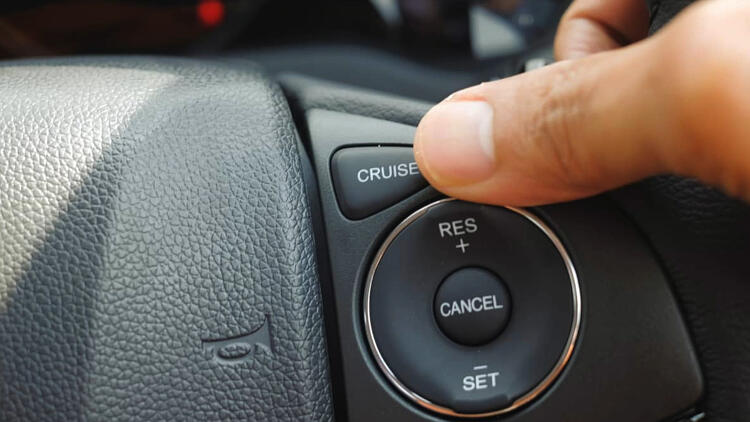
Learn to use cruise control on highways to reduce the distraction of monitoring your speed.
Learn how to cancel the cruise with the cancel button.
When driving and you're near a potential hazard, hover your finger or thumb over the cruise's cancel button.
It's going to reduce fatigue on when you're driving on the highway.
And as well, it's going to greatly reduce your chances of getting a speeding ticket because your speeds not going to be up and down.
You're going to be at one set speed and it's going to reduce distracted driving, because you're not going to have to be looking at your speedometer all the time to check your speed.

Pass semi-truck quickly. Don't hang out near these and other large vehicles.
And we're coming around the corner and again we're into the glare, so we put our visor down.
And we now we're looking at the median in the center.
We're following that vehicle in front of us to make sure that we can locate the roadway.
As well, the signs along the side of the road are also going to indicate where the roadway is.
The vehicle behind me has pulled back in behind me, they're not beside me, so I don't have to worry about that vehicle any longer.
And also I'm looking far down the mountain pass here to see where the road is going.
So now I can see it curves around to the left.
And again you can see here the cluster of vehicles in front of us but you want to stay out of that cluster.
And keep in mind, space management trumps speed management so it's more important to maintain your space than it is to maintain your speed.
So it's space first and then speed.
We can also see that we're coming up towards a red light here and all the traffic is starting to bunch up.
When traffic is slowing, the spaces between the vehicles gets smaller.
That's the other way that you know traffic is slowing down, so the spaces between the vehicles gets smaller, in addition to brake lights obviously.
But then you can see the red light and that will keep you safe as you're coming into an urban area and that's essentially what we're doing on the highway here.
For another video Click here, to subscribe click here.
And remember, pick the best answer not necessarily the right answer.
Have a great day, bye now.
HUGE, Funny Blooper
When the vehicle in front of you goes past a fixed object, one rinosaur, one rinosaur? One rinosaur.
Maintain your...
[UPROARIOUS LAUGHTER]
It's starting now.
Oh my God, oh my God.
All right.
What is a rinosaur? All righty.
Okay.
Oh, that was funny.


